Tonjiru and More Delicious Japanese Soups!
Thuy Fang
Posted on December 17, 2024
Share:
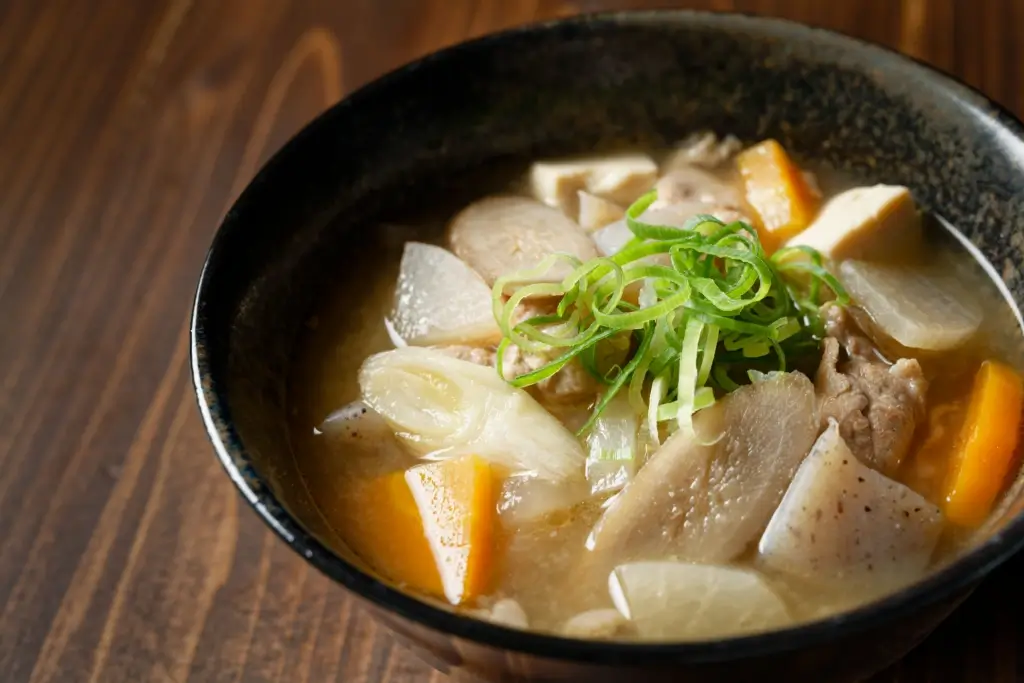
Whether it’s a simple home-cooked meal or a dish served on special occasions, Japanese soups always reflect the culture’s deep bond to nature and the changing seasons. Let’s explore some fantastic traditional Japanese soups, starting with tonjiru!
Tonjiru
Tonjiru, or butajiru, is a delicious Japanese soup with pork and many vegetables. The name comes from ton (pork) and jiru (soup). Tonjiru has roots in Japanese home cooking, where families have long prepared it as a nourishing and economical way to use leftover ingredients. It is commonly featured at community events like mochi-pounding ceremonies and New Year’s celebrations.
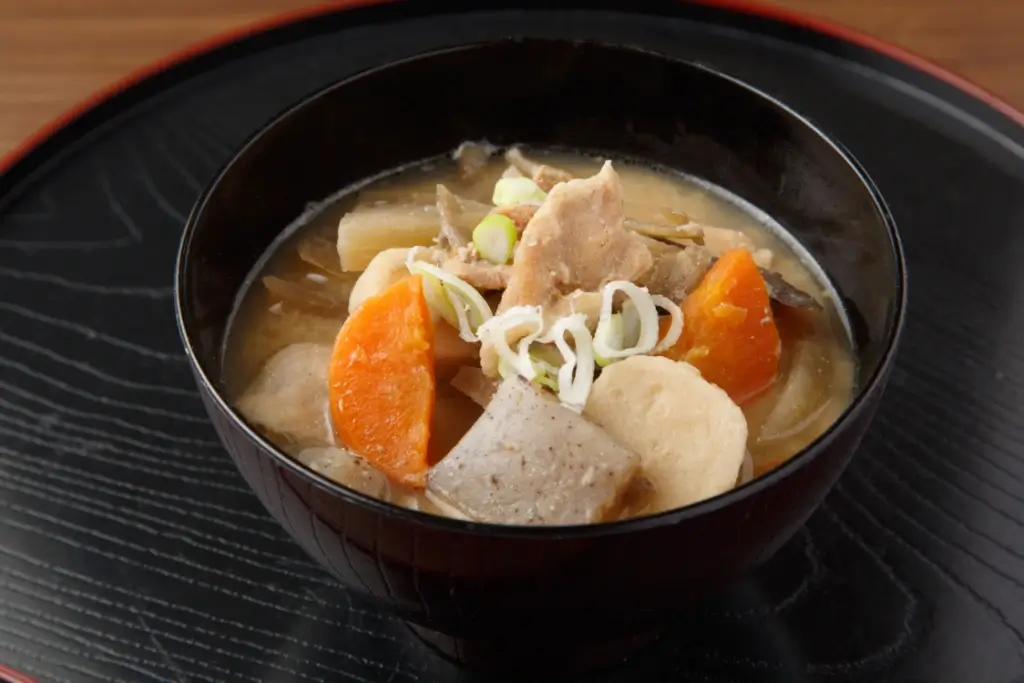
The key ingredients in tonjiru are thinly sliced pork and various vegetables such as daikon radish, carrots, burdock root, konjac, and Japanese leeks. Some recipes add tofu, mushrooms like shiitake or shimeji, and even taro or sweet potatoes. The soup has a rich and slightly creamy texture from the miso paste and pork fat, with layers of umami flavor.
Packed with protein, fiber, vitamins B6 and B12, and minerals, this soup is tasty and healthy. The variety of vegetables provides essential nutrients, while the miso paste contributes beneficial probiotics. Tonjiru is often enjoyed at home, but you can also find it in restaurants, izakayas (Japanese pubs), or as a ready-to-eat soup at convenience stores.
Ohaw
Ohaw is a unique and hearty soup from the Ainu people in northern Japan. In the Ainu language, the name translates to “warm soup.” For generations, it has helped the Ainu stay cozy in cold weather. What’s unique about ohaw is that it doesn’t use miso or soy sauce like many Japanese soups, making its flavor true to Ainu traditions.
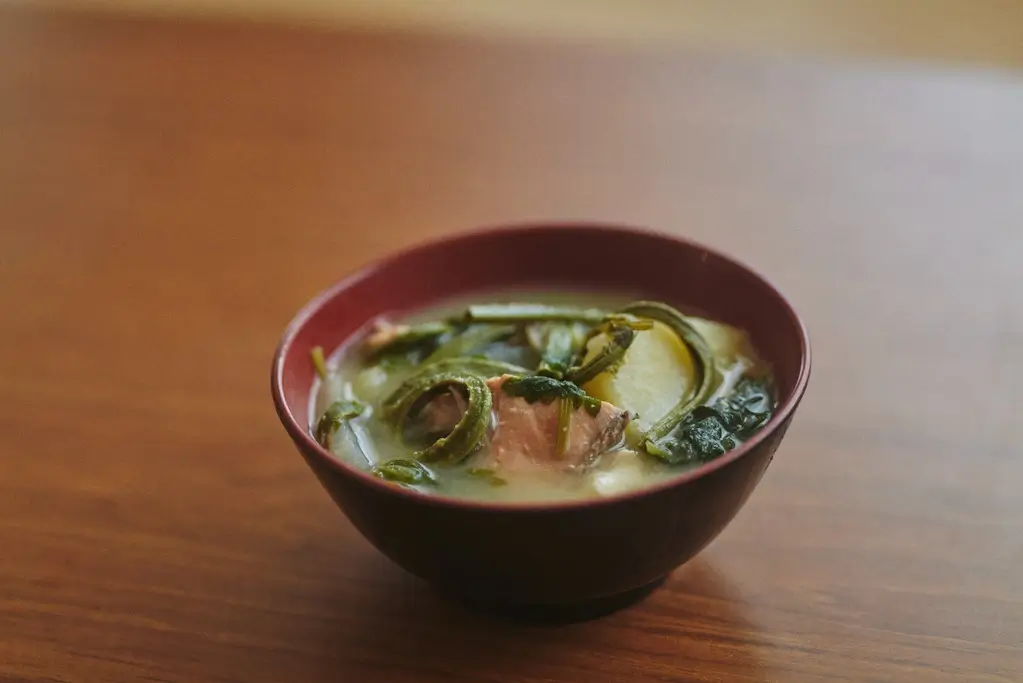
Instead, the soup uses a flavorful stock from fish or animal bones, with a touch of kelp to enhance the taste. Other ingredients, including meat, fish, wild plants, and vegetables, are combined to create a rich and satisfying meal. The dish is full of vitamins and minerals from fresh, wholesome ingredients.
There are different types of ohaw depending on the main ingredient. For example, cep ohaw uses salmon, yuk ohaw is crafted with venison, and pukusa ohaw features wild onion. Each variation reflects the Ainu’s deep connection to nature and their skill in using local ingredients.
Are you looking for great snacks to help you through the cold winter? Check out Sakuraco! Sakuraco delivers traditional Japanese snacks, teas, and sweets from local Japanese makers directly to your door so you can enjoy the latest treats directly from Japan!
Kenchin-jiru
Kenchin-jiru is a delightful Japanese vegetable soup with a long history that started in Zen Buddhist temples. Its name comes from Kencho-ji, a famous temple in Kamakura. It’s often eaten during the colder months or for special occasions like Setsubun, an annual festival celebrating the arrival of spring.
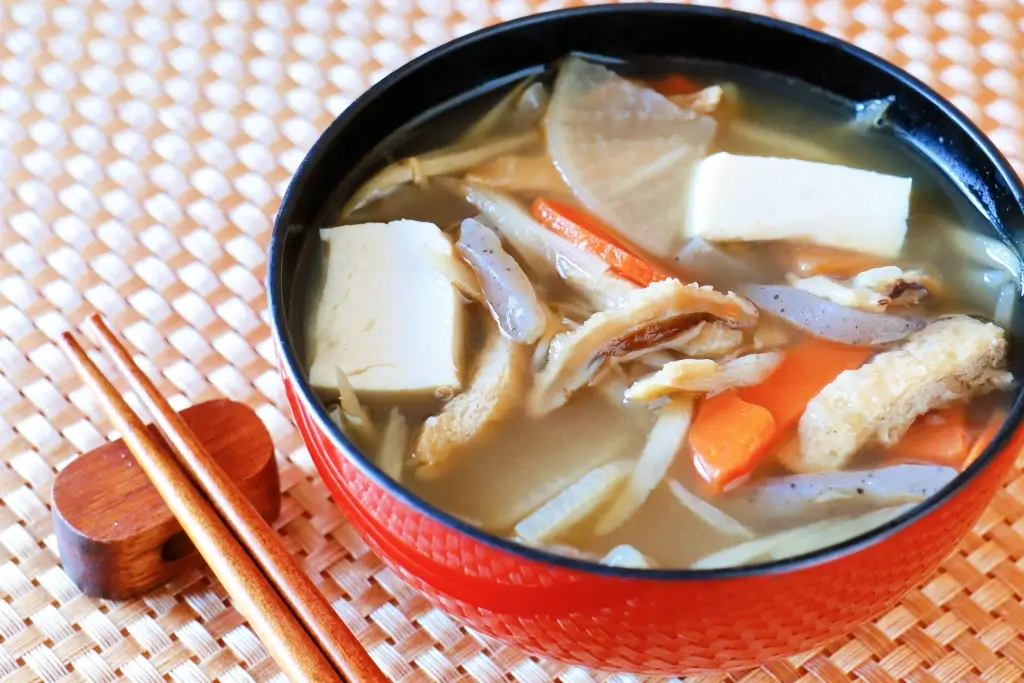
The story of kenchin-jiru is fascinating. Legend says a monk once dropped tofu on the clean temple kitchen floor. Instead of wasting it, they crumbled the tofu into the soup, creating today’s dish. However, some believe its roots may also lie in shippoku cuisine, a style influenced by Chinese immigrants in Nagasaki during the Edo period (1603-1868).
This soup was part of the monks’ meals and prepared with simple plant-based ingredients. It includes tofu, root vegetables, shiitake mushrooms, and a special broth made from kombu seaweed. The ingredients are often sautéed in sesame oil before simmering, adding a nutty aroma and depth of flavor. This soup is loved for its satisfying texture, combining tender vegetables and soft tofu in a light but savory broth.
Ozoni
Ozoni is a traditional dish usually enjoyed on New Year’s Day, carrying the hopes and wishes for a prosperous year ahead. The origins of ozoni trace back over 500 years to Japan’s samurai era. It was first served during honzen ryori (formal meals), the opening course symbolizing good fortune. Over time, it transitioned to being a New Year’s tradition, reflecting the start of fresh beginnings.
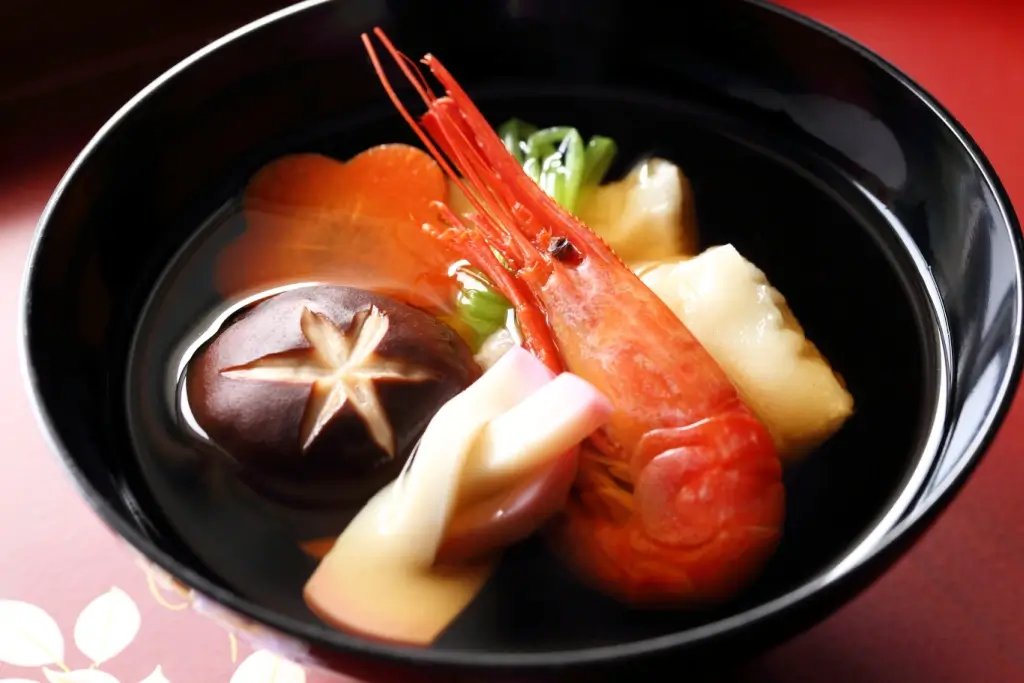
The ingredients in ozoni also vary widely, including seasonal vegetables like carrots, daikon, and spinach, as well as toppings like kamaboko (fish cake) and mushrooms. At its core, ozoni always has soft and chewy mochi floating in the tasty broth. In the Kanto region, the ozoni broth is typically straightforward and flavored with soy sauce. In contrast, Kansai-style uses a creamy white miso broth for a fuller flavor. Some areas even create a sweet red bean version, giving a completely different twist to this classic dish.
Hoto
Hoto is a flavorful noodle soup from Yamanashi Prefecture. It’s a beloved regional dish, especially in the Lake Kawaguchi and Fuji Five Lakes. The soup is made by stewing thick, flat noodles with diverse vegetables, such as kabocha squash, carrots, and mushrooms, in an umami miso-based broth. The noodles absorb the rich flavors of the miso broth, while the vegetables add sweetness and heartiness. The dish is also nourishing and healthy, providing a balanced mix of carbohydrates, vitamins, and minerals.

The dish’s origins can be linked to the agricultural changes in Yamanashi. Due to rice crop shortages, wheat farming became more common. This change led to the creation of hoto to help feed people, especially in places where growing rice was hard. Over time, hoto became an essential part of Yamanashi’s food culture. On the other hand, some people believe the renowned warlord Takeda Shingen helped create it, with stories saying he fed the soup to his soldiers before battles. This connection to history has made this dish a symbol of strength and resilience for locals.
Why should I try Japanese soups like tonjiru?
Japanese soups offer more than just comfort; they bring us closer to tradition, culture, and community. Each bowl tells a story, from the lovely warmth of tonjiru to the rich flavors of regional dishes like hoto and kenchin-jiru. These soups bring families and communities together to enjoy a meal and a moment of connection.
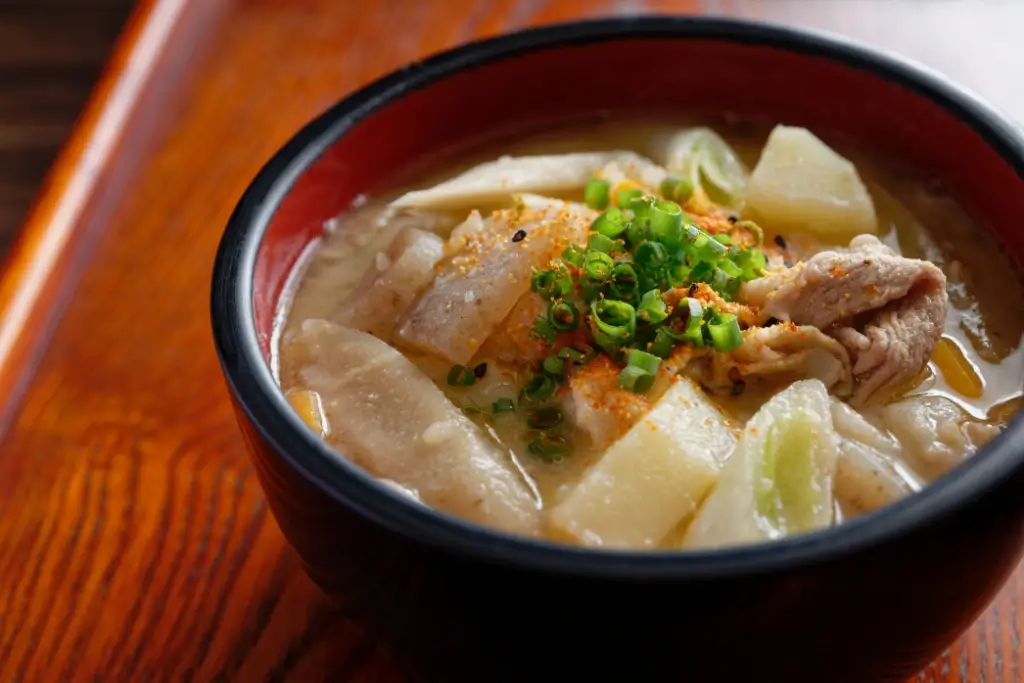
Moreover, the wide range of ingredients and cooking techniques also showcase Japan’s commitment to balance and nourishment, making these soups yummy and wholesome. What’s your favorite Japanese soup, and why does it stand out? I’d love to hear about your experience in the comments!

Discover authentic flavors with Sakuraco
Get Sakuraco 

Discover authentic flavors with Sakuraco
Get Sakuraco 
Related Articles
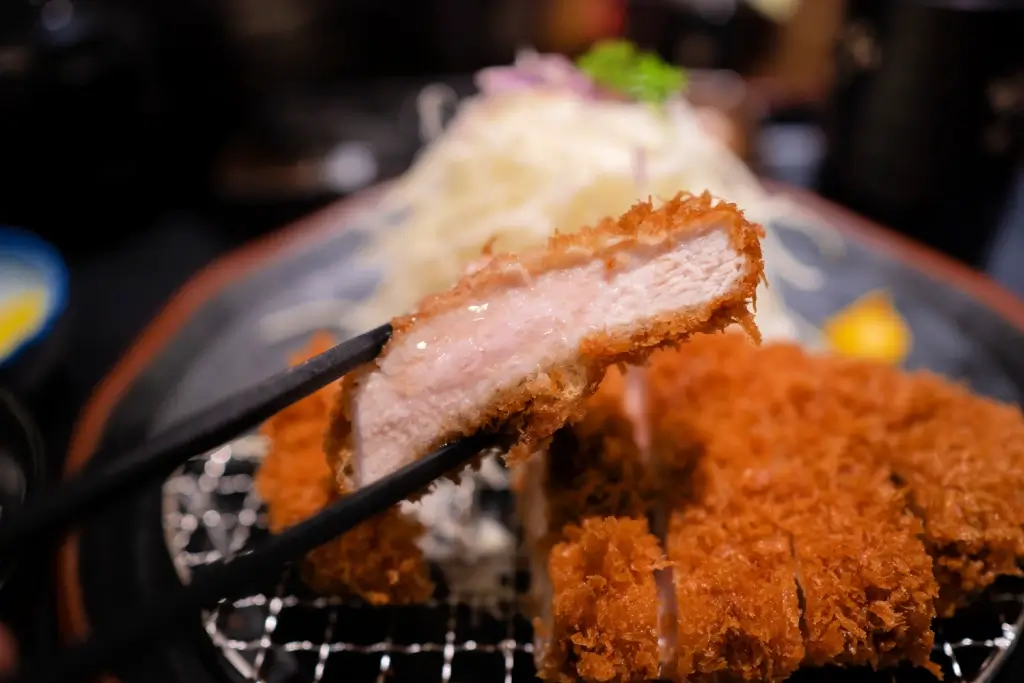
Tonkatsu Luxury Restaurants: Best Ones to Try!
Don’t miss out on tonkatsu if you’re traveling to Japan! Tourists often add the meal to their must-eat list because of its delicious and satisfying nature. Even better, you can elevate the experience by going to luxury restaurants across Japan, where you can experience some of the most celebrated pork cutlets.

Mochi: How is Mochitsuki Made in Japan?
Mochitsuki is the Japanese tradition of pounding steamed rice to make mochi for the New Year. Families and neighbors gather to participate in this lively and meaningful tradition. The teamwork involved helps everyone feel a sense of connection.

Konpeito Candy: What Makes This Starry Treat Shine?
If you are a fan of the famous Demon Slayer series, then you probably know that the favorite treat of the adorable Nezuko Kamado is those tiny, colorful little sweets.

Kinako: The Amazing Roasted Soybean Powder!
Kinako is a very popular ingredient that can easily be found in many traditional Japanese sweets. It has a distinctive flavor, standing alongside other classic tastes such as red bean or sesame. Let’s explore this charming ingredient together, and who knows, you might even be able to make it in your own beloved kitchen!



